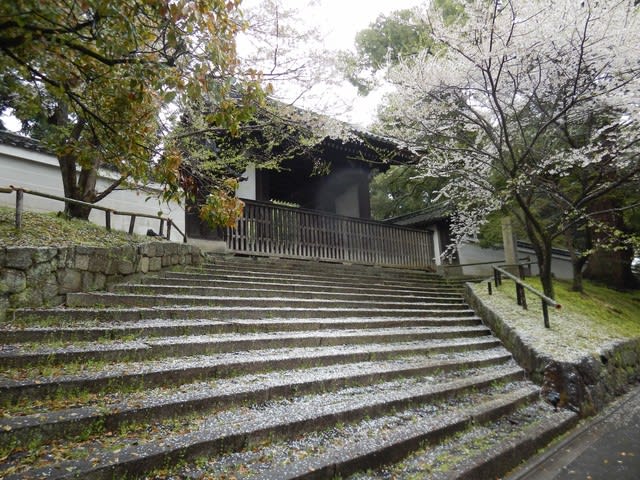Having considered the forces, let us consider what kind of world these forces constitute. First, we defined the forces. There are three fundamental forces. This definition and identification of types of forces is in keeping with Newton's attitude in Principia. It is an attitude of trying to explain with as few tools as possible. For example, whether it's rain in New York or London, you could say that the essence of making it rain doesn't change. This attitude is also found in Toynbee's historical studies.
There is value as the essential force that moves history, there is technological efficiency that is the force (technology, economy) that constantly tries to improve people's lives, and there is the force that tries to improve the organizational strength of society and it is the social structural force. I thought there were. All forces have a reaction, and this force is called the reaction force. And let us hypothesize that the forces defined in this way follow the following principles when organized.
1 Value changes with time and is the premise of all forces. (principle of value)
2 There are always forces at work in all human societies to improve life, and these are influenced by values. (Principle of life improvement → technological efficiency)
3 There are always forces at work in all human societies that seek to increase the organizational strength of the community, and these are influenced by values. (Principle of community development → social organizational strength)
4 New values and their forces are repelled by old values and their powers. (Principle of reaction force)
5 Human society is influenced by its environment, and principles 1 to 4 are influenced. (environmental principle and external principle)
These principles of forces can be regarded as the "elements" of forces that make up Toynbee's framework of civilizational dynamics. Each of these principles may need to be tested. I plan to examine the first principle, the principle of value, in more depth on another occasion. Regarding the second principle, the principle of life improvement, it is necessary to collect and enumerate the factors that have improved life in each civilization. I'm planning to try it civilization by civilization. It will be a material to verify E=g(f(t)), which expresses technical efficiency. We will analyze what caused the technological efficiency, that is, the factors that improved our lives. We analyze that this formula of technological efficiency force is composed of the value related to time (V = f(t)) and the growth force included in the force itself (which is included in the function g). . Implicitly, "life-enhancing things" refer to things that are relevant to the times and utility .
Regarding the third principle, the principle of community development, as a methodology, it seems necessary to collect and enumerate the factors that contributed to the development of the community for each civilization, as with the second principle. This will serve as a material for verifying the formula S=h(f(t)) that expresses the social structure force. It investigates what caused the social structural strength, that is, the factors that improved the organizational strength of the community. It is composed of values related to time (V=f(t)) as well as technological efficiency, and of developmental forces contained in the forces themselves. Things that develop society are things that are in line with the times, and they seem to point to things that have their own development. This is the same for technical efficiency, but it implies that social structural power can be changed by changes in time-related values, by changes in the power itself that develops organizational power.
Let's think about how to examine the fourth principle, the principle of counteracting force. It is also necessary to collect and enumerate examples for each civilization, but what to see is important. The principle of reaction is the principle that there is a force that opposes the second principle (the principle of living improvement) and the third principle (the principle of community development), and it is necessary to search for such a phenomenon. I mentioned the Reformation and imperialism as examples of such phenomena before, but I believe that these phenomena are not composed of simple forces, but of complex systemic forces. Why is the Reformation a reaction? Why is imperialism a reaction? The "Reformation" is a reaction from the perspective of the European medieval world as a perfection type, and the "imperialism" is an industrial revolution or Pax Britannica as a perfection type. In this case, it is a counteraction, but it may also be understood as a manifestation of conservative power in which technological efficiency and social organizational forcse collide with and fuse with reaction. As the times change, technological efficiency and social structural strength will develop, but the meaning of technological efficiency (improvement of life) and social structural strength (community development) will also change due to changes in their respective values or reaction. It would be better to think of it as solidified and conservative. This is called "maintenance ability".
Conservatism, in Toynbee's sense, can be said to be the force to resist "the forces acting from within and outside the system" during the period of civilization's decline. How the system adapts to these internal and external forces, and adapting with mature technological efficiency and social structural strength is the position of "conservative power", that is, conservatism. It may be said. The counteracting force and the conservative force were different forces, but at some point they will join forces. Against the creative ruler or the minority ruler who arises from the deterioration of this creative ruler in Toynbee, what used to be a counteracting force turns into a conservative force.
It is important to analyze each force, but it may have been difficult to clarify the concept of conservative force. But there are some good writings. For example, Burke's "Reflections on the French Revolution" and Bagehot's "British Constitutional History" probably analyzed the structure of conservative force.
All rights reserved to M Ariake
















